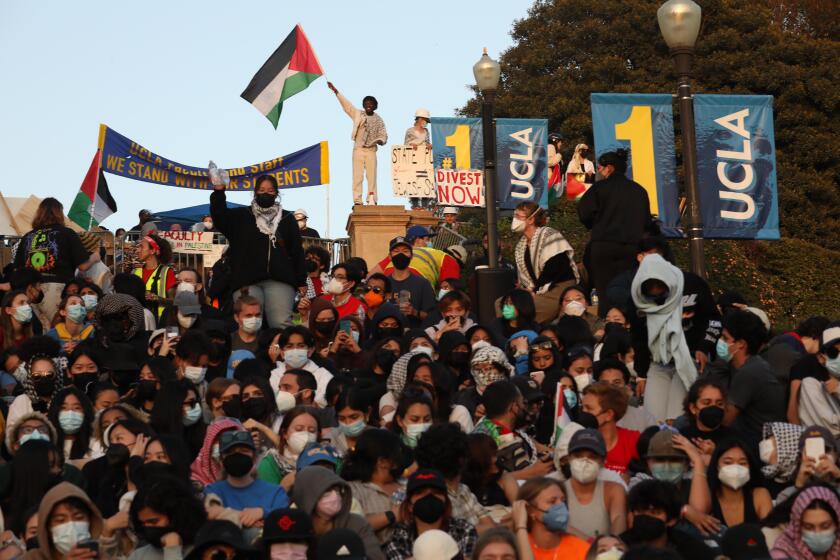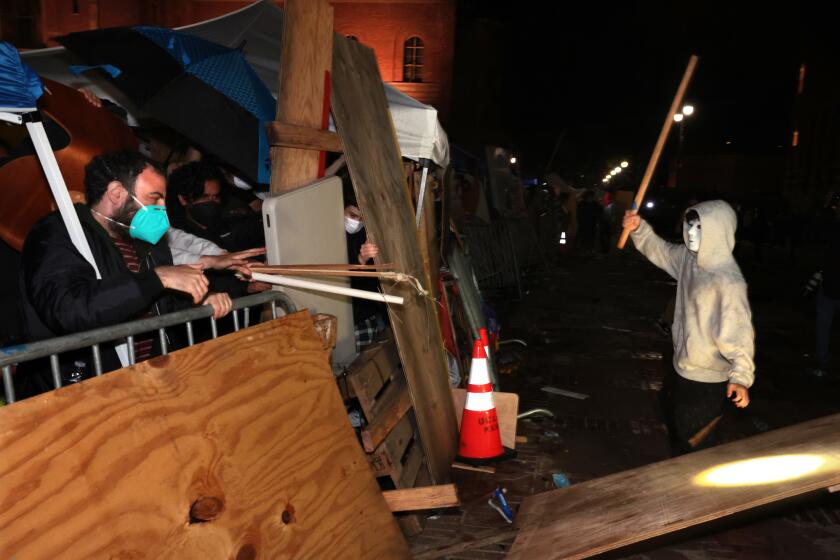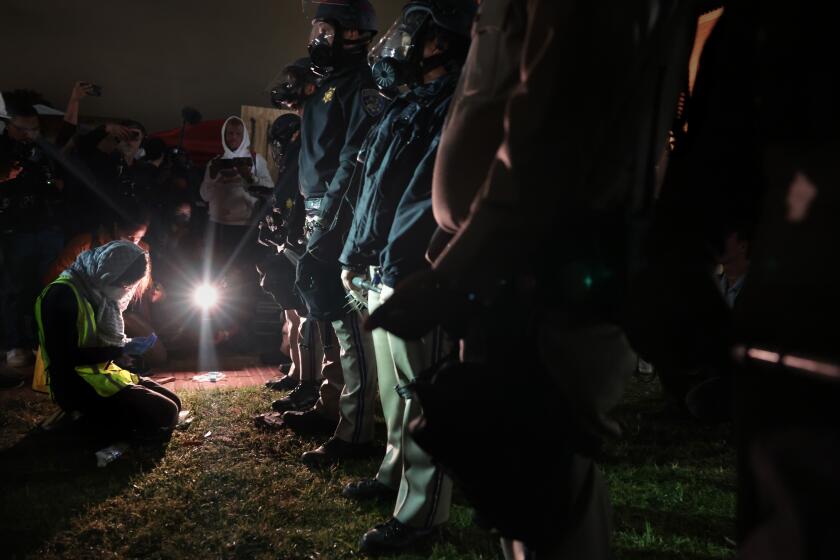Driven to Dream
These teens don’t just talk about sex, drugs and rock ‘n’ roll. They talk about photovoltaic cells, titanium crash cages and integrated drivetrain systems.
Six teams of high school students--including three from the same school--gathered Monday for the first “Build Your Dream Vehicle” competition to be held in Los Angeles.
One team designed an aluminum car--it can be recycled once you’re done with it--featuring a radio that changes stations on the driver’s voice command. Another team included a refrigerator in its dream car. And yet another included an even more essential feature for L.A.--bulletproof windows.
The contest, sponsored by Chrysler Corp. and held at the Petersen Automotive Museum, is intended to teach students not only how to design a futuristic, environment-friendly dream vehicle, but also to work as a team.
Three teams from the same high school--Los Altos in Hacienda Heights--made it to Monday’s semifinals out of an original 35 entrants. Simi Valley High, Hoover High in Glendale and Garfield High in Los Angeles also sent teams.
One team from Los Altos was chosen to face off against teams from Hoover and Simi Valley in the finals. The winners will be selected Wednesday.
“We had an advantage,” said team coach Bob Franz of Los Altos, explaining how three teams from his school made it to the semifinals. “We’re the national champions of high school solar car racing.”
Students from competing teams at Los Altos even rooted for each other. As long as one of their teams win, the students said, the $3,000 first-place prize money would help get the school’s solar car to the World Solar Challenge in Australia.
Erika Woo, a Los Altos student, acknowledged that there has been some rivalry. But, she said, competing team members also have helped each other.
Strangely enough, none of the cars designed by the students were solar-powered. “Too expensive,” one team member said, noting, however, that one of the Los Altos cars featured solar-powered air-conditioning.
The Los Altos teams designed the Epic, a hybrid electric with a compressed natural gas generator; the Decorum, a hybrid gas turbine, and the Elektrika, an electric car.
A car designed by the Simi Valley team featured a gas-turbine engine, a concept that Dick Messer of the Petersen Automotive Museum pointed out was tried unsuccessfully in the 1960s by Chrysler. It seems the exhaust would run very hot and “set fields on fire.”
The students began working on their designs in October, spending weekends--and some class time--brainstorming and consulting everything from Popular Mechanics to engineering experts.
Appearing before a panel of three judges, 16- and 17-year-olds explained the propulsion system and safety features, presented a marketing plan and outlined the most important detail in the auto world: their scheme for making a profit.
The Epic features a so-called blind spot sensor that warns the driver when he or she is too close to another car. The car also features an electric engine--with a backup natural gas system that kicks in if the car runs out of juice on long trips.
Members of the Hoover High team explained why they named their dream car the Cyclone.
“It brought to mind a fast racing car,” said Lindsay Weitzel, a 12th-grader at Hoover. “It’s also our school mascot.” Actually, it’s the Hoover Tornadoes, but Tornado sounds too much like an existing car--the Toronado.
Some of the prototypes feature existing technology.
The teacher-coaches say the competition helped the students learn about teamwork.
“They realize it isn’t a ‘me’ thing,” said Hoover commercial art teacher Paul Diffley. “It’s a ‘we’ thing.”
“When I was growing up, we were more interested in horsepower--how fast can we go and how quickly can we get there,” said the Petersen Museum’s Messer.
“Everyone of these presentations had a big emphasis on the environment. They are really concerned about the future of our planet. It was encouraging.”




